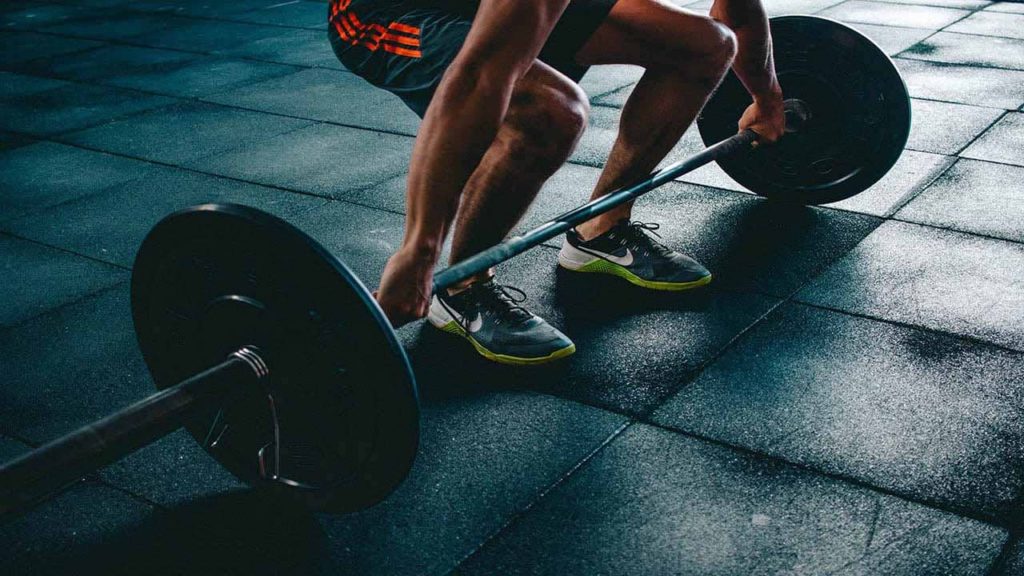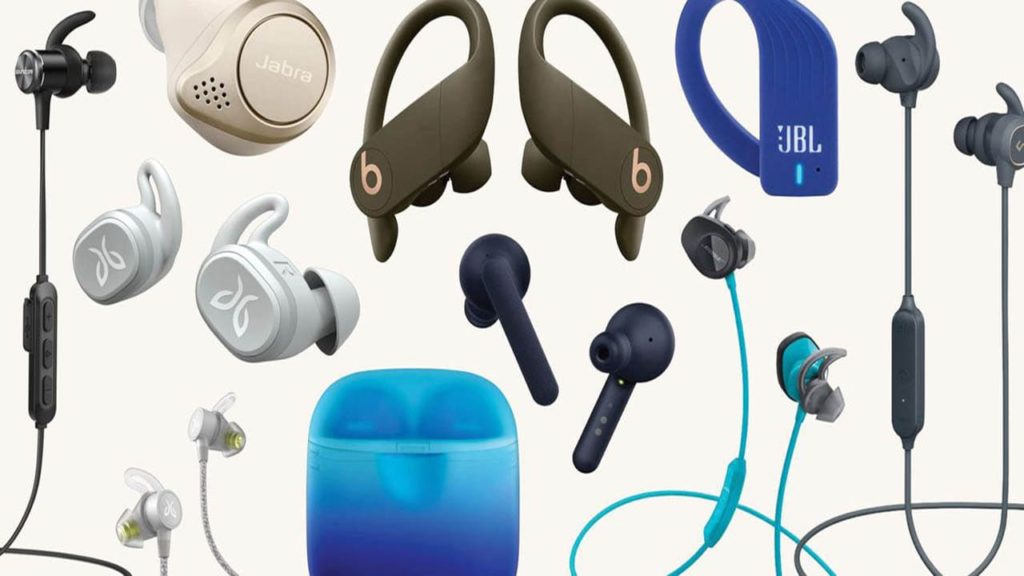As a result, for individuals who take their workout time seriously, a set of wireless workout headphones is a fantastic fit. for that, this is a special guide for Best Wireless Earbuds for Working Out.
Any workout plan requires the correct amount of motivation. But, without a killer playlist, how far can you truly go? Wireless earbuds are great for any exercise you choose. You’ve probably experienced the remarkable impact that music has during a workout, whether you’re pounding iron to Iron Maiden or riding to Bach.
In fact, studies show that listening to uplifting music can help you achieve a happy outlook, putting you in the proper frame of mind to work out. Another study discovered that persons who run on a treadmill while listening to music increase their speed and distance without becoming more exhausted. Music may even aid in the prevention of weariness.
However, selecting the finest best wireless earbuds for working out with so many choices is almost as difficult as finding the perfect exercise playlist.

Should You Exercise with Headphones On?
When you exercise, you’ll notice that people come in all shapes and sizes. Of course, we’re talking about headphones.
Some individuals can’t work out without their headphones, whether they’re two-bit earbuds or a high-end wireless headset. While using headphones for some activities, such as swimming and yoga, can be difficult, the perfect playlist can help you set the tone, stay motivated, and complete your workout.
Do headphones, on the other hand, have any effect on your performance? Sue Reynolds Reed, a licensed sports trainer with Aurora Health Care, thinks they can. The intensity and success of your workout can be influenced by the music you listen to and the type of exercise you do.

- Weightlifting
Boomboxes used to jingle like barbells. Even though headphone cords readily get snagged on equipment, Walkmans and mp3 players gave users greater personal space over time. Wireless headphones, or the best wireless earbuds for working out, on the other hand, have transformed the game. When it comes to lifting weights, music has the ability to energize you and motivate you to finish the last set.
- Running, cycling, and other cardio exercises
According to a popular survey, six out of ten runners use headphones. Runners can stay on track by listening to music with a tempo that matches their intended running cadence. According to a recent study, runners who listen to high-tempo music have a reduced perceived level of exertion, allowing them to run for longer distances.
Simply put, music may make running more enjoyable and help to establish a healthy habit. People who utilize stationary cycles, stair climbers, rowers, or elliptical machines are in the same boat.
While headphones may be beneficial in the gym, they can be problematic on the streets and at crosswalks if the loudness reduces cyclists’ and joggers’ awareness of neighboring vehicles and other risks.
It’s a good idea to do a workout, or even a portion of a workout, without headphones, whether you’re outside or at the gym. Unplugging can assist you in focusing on your breathing, being in touch with your body, and improving your mental health so that you can appreciate the environment around you.

The Best Wireless Earbuds for Exercise
According to Sareena Rama, a certified personal trainer and group fitness teacher in Orange County, CA, the best wireless earbuds for working out are not one-size-fits-all. When looking for your own pair, keep these suggestions in mind.
Think about the IP rating. Sweat resistance should be a “primary focus” for most people, according to Rama. The IP (“ingress protection”) standard is used to determine to waterproof, and it varies from IPX0 (no protection from liquids) to IPX8 (can be buried deeper than 1 meter). Because IPX ratings aren’t permanent, your headphones’ water resistance may deteriorate with time.
IPX4 is a good place to start because the headphones will be waterproof and sweatproof. Meanwhile, IPX6-rated gadgets can be rinsed in the sink, and IPX7-rated devices can be submerged completely in shallow water for half an hour (not that you’d want to). It’s fine if your wireless earphones don’t have an IP rating if you won’t be getting extremely sweaty.
Decide whether or not you actually want no cables. Several popular solutions are totally wireless. Others, on the other hand, incorporate a cable that connects only the buds, which is useful in a few cases. If you’re doing really rigorous or sweaty workouts, such as outside running, Rama recommends using a connecting wire. Separate buds are acceptable for the rest of the time, as long as they stay in your ears.
Don’t be concerned about the battery life. “In my perspective, battery life only matters if your workouts are longer than 45 minutes,” Rama explains. A great battery is nice to have, but it’s probably not necessary unless you’re a cyclist, runner, or endurance athlete—it “shouldn’t be the most crucial element” for more casual sports, she says.
Benefits Of Using Wireless Earbuds to the Gym
Whether you run to the Led Zeppelin album or lift weights while listening to The Friend Zone podcast, one thing is certain: having something to listen to on the track, trail, or treadmill will improve your workout far more than you would imagine.
That’s why, along with a decent pair of kicks, a nice pair of earbuds is one of the most vital training accessories you can acquire these days. And not just any pair will suffice. When you go for a jog or a bike ride, you don’t want a tangle of cables to get in the way. Sure, wired earbuds are inconvenient. However, you’d imagine that wireless ones aren’t yet reliable for long-term use — even their batteries aren’t currently stable.
However, things have altered through time. While wired earbuds continue to have flaws, wireless earbuds are improving — technological improvements will undoubtedly prove them to be the better fitness option in the long term.
How To Choose Best Wireless Earbuds for Working Out

Before you buy a pair of wireless earbuds, here are eight things you should know.
Wireless earbuds, often known as genuinely wireless earphones, are extremely popular right now. Every headphone maker is scrambling to get a pair on the market, and those who don’t have a product ready to sell are importing generic versions and customizing them to ensure they don’t miss out.
Wireless earphones, on the other hand, are not all made equal. There are some excellent products on the market, as well as some genuinely awful ones. If you do your research before purchasing a pair, you’ll be able to avoid the worst models on the market and perhaps end up with something worthwhile. Earbuds are something we use every day on our way to work or while exercising, so if you enjoy listening to music or audiobooks, it’s worth investing in a good pair.
- Cost
There are some inexpensive wireless earphones on the market, but I would recommend avoiding them nearly entirely. Wireless earphones that are of good quality do not come cheap. Quality doesn’t come cheap, so be prepared to spend a little more to acquire something decent.
- Codecs
Find out which codecs your favorite wireless earphones support. SBC is the sole codec supported by the most basic versions, which does not support higher resolution music and typically sounds flat due to the codec’s limited transmission speed. Check to determine if your earphones support AAC if you’re an Apple user.
Buying a pair of earphones that only support SBC, aptX, or LDAC is a waste of time because Apple devices only support SBC and the higher quality AAC. The world is your oyster if you’re an Android user. Most Bluetooth audio codecs are supported by the latest Android versions, including the Hi-Res aptX HD, which sounds fantastic.
- Ear-Tips
One of the most crucial components of a pair of earbuds is the cable. If you use silicone ear-tips that are too narrow or shallow, they will never make a good seal with your ear canal, and you will be troubled by external noises interfering with your music. In fact, I don’t use Apple’s AirPods because of the lack of a proper seal.
I occasionally swap out the earbud tips for memory foam tips, which expand with the warmth of your ears and create a great acoustic seal. Unfortunately, because most wireless earbuds must be stored in a charging case when not in use, after-market ear-tips aren’t usually practical because the snug fit in the depression where the earphones rest means you can’t close the charging case lid if the earbuds have large ear-tips.
- Life of the Batteries
The majority of wireless earbud manufacturers will claim a playback length of three to five hours. In real-world situations, you should expect to save roughly 20% on the given figure. When the battery in the earbuds runs out, you must put them back in their charging case to recharge them using the charging case’s battery.
The charging case features a battery that can carry enough power to charge the earbuds three to four times before the charging case needs to be recharged. Be aware that some wireless earbuds manufacturers may quote the combined playing duration of the three or four top-ups available from the charging case rather than the earbuds’ playing time.
- Controls
More expensive wireless earbuds will have control pads or buttons on the earpieces that you can press to boost volume, skip tracks, issue voice commands, or answer calls. Cheaper wireless earbuds frequently don’t have any controls, so you’ll need to keep your smartphone nearby to alter the volume or skip tracks.
Some of the best earbuds can even automatically cease music when you take one out of your ear. Take a hard look at the available controls. They’re a must-have but look for a pair with sensitive controls.
- Noise Isolation
Some wireless earbuds have a noise-canceling feature that can help reduce aviation engine drone or railway track clickety-clack. Because noise-canceling technology consumes batteries, you won’t get very long listening durations, and the earpieces may be quite wide to accommodate the larger size batteries required by the circuitry.
- Case for Charging
The charging case, which stores and recharges wireless earbuds, is an essential component of wireless earbuds set. The case should be durable if you’re going to be bringing the earbuds about with you.
- Volume
When it comes to volume levels, not all wireless earbuds are made equal. Some earbuds need to be turned up to maximum level, while others may be set to 50% volume and still give enough sound. If you’re comparing a few types in the audio store, pay attention to the volume levels, because, unlike wired earbuds that can be connected into a portable headphone amplifier, wireless earbuds have no method of going above maximum volume.
Without the annoying cords connecting each earphone, wireless earbuds are ideal for exercising or listening to music. They’re perfect for folks who need to move around but don’t want to be tethered to anything. The disadvantages include the battery life and the fit.

– Final Thought,
There are so many different varieties of headphones that it might be difficult to figure out which ones are best for you. Most individuals find in-ear headphones to be very comfortable. Working exercise while wearing inconvenient headphones is a pain in the neck. You’re undoubtedly aware of this. It’s difficult enough to concentrate on your workout; you don’t need to worry about the uncomfortable headphones on top of that. You can now easily know how to choose your Best Wireless Earbuds for Working Out …
*************************

